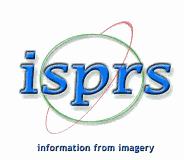|
Book Review W.G. Rees, 2006, Remote Sensing of Snow and Ice. Taylor and Francis By: Rudiger Gens, Alaska Satellite Facility, Geophysical Institute, University of Alaska Fairbanks Email: rgens@asf.alaska.edu With these set of goals in mind, the author delivers a close to perfect piece of work. The book is very well structured. It covers introductory review chapters on the cryosphere, remote sensing, and image processing techniques. It then ties the cryospheric constituents to physical properties that can be quantitatively measured. The following five chapters describe the use of remote sensing in the respective fields of the cryosphere. The final conclusions are accurate and to the point. The book provides an extensive bibliography and a good index. There is one shortcoming that the book has to be a true work of reference. It does not have a glossary. Throughout the book, all the relevant terms are precisely defined. However, for the ease of use they could have been summarized in a glossary. Chapter 1 briefly introduces the constituents of the cryosphere: snow cover, sea ice, freshwater ice, larger ice masses on land, and permafrost. The relevant terms and the role of remote sensing with respect to the constituents are defined. Since permafrost, though indicated by surface features that could be monitored, cannot be directly studied by remote sensing, it is not covered in the book. All relevant techniques used to acquire remote sensing data are covered in chapter 2. The description is kept to a very adequate level required for the basic understanding of the concepts. Even though very recent techniques such satellite laser altimetry and SAR interferometry (InSAR) are covered, the otherwise excellent bibliography for further reading is a little short for these two techniques. At least, some general overview papers would have been helpful. Chapter 3 provides an excellent summary of the most commonly used image processing techniques. As the author rightfully points out the chapter can only present a briefly outline of the most common techniques. Any more in depth treatment of the subject is beyond the scope of the book. So, only image enhancement and image classification techniques are modestly covered. The link relating the constituents of cryosphere to physical properties is established in chapter 4. For each of the constituents a physical characterization is provided, and the appropriate electromagnetic and thermal properties of the respective constituent are summarized. In this way, the remote sensing data acquired in the various parts of the electromagnetic spectrum can be appropriately characterized in the following application chapters. Chapter 5 covers the remote sensing of snow cover. Studying the spatial extent as well as snow water equivalent and snow depth mostly depend the scale of the study. Remote sensing data can help to determine the physical properties of snow packs. Chapter 6 describes the use of remote sensing for sea ice studies. It emphasizes the use of passive and active microwave imagery, especially for studying ice extent and concentration, ice types, and ice thickness as well as ice dynamics. Remote sensing of freshwater ice, the topic of chapter 7, is dealt with in much the same way as sea ice. The only difference lies in the scale. Chapter 8 introduces the remote sensing of terrestrial ice masses in the form of glaciers, ice sheets and ice shelves. Especially the use of SAR imagery helped to advance the knowledge in this field tremendously. The use of remote sensing for detecting and monitoring icebergs, as described in chapter 9, has still its limitations, mainly due to the scale of the targets. Future SAR missions with increased spatial resolution, multiple frequencies and polarizations might solve part of the current problems. The concluding chapter 10 provides a short and accurate summary about achievements, challenges and trends in the field of remote sensing of snow and ice. Remote sensing made large scale observations of Antarctica and Greenland possible, avoiding logistical challenges of any type of fieldwork approach. Remote sensing techniques, especially SAR related techniques, proved to be more powerful than anticipated. Microwave data with its all weather capabilities have overcome issues of cloud cover that is very common in other data sets. Current radar techniques could be even more effective with systems that operate with more than one frequency and polarization. Advanced techniques using differential SAR interferometry suffer from temporal decorrelation because the motion of glaciers, for example, is too fast to be measurable with current data coverage. Improved temporal coverage would help these particular and other techniques in monitoring changes. The synergistic use of multiple data sources and multi-temporal studies for monitoring and analysis are among the most promising trends on the horizon. Overall, the book gives an excellent introduction into the remote sensing of snow and ice. Its publication is timely since especially in the last decade old techniques have been refined and various new techniques have been established. References Hall, D.K. and Martinec, J., 1985, Remote Sensing of Ice and Snow. London:Chapman and Hall.
|
|
|
|
|
